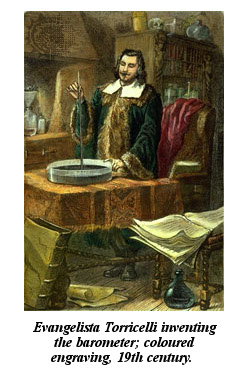July 17, 2015
 By: Donna Giachetti
By: Donna Giachetti
Around the EI offices lately, something magical has happening. Folks are laughing more… There’s a lighter spring in their step and a happy-go-lucky chirp in their voices… It’s as if we have all become enchanted.
Well, let me amend that…
EI employees are a very grown-up, responsible bunch. They take pride in doing their jobs as well as humanly possible. If you haven’t yet read Ted’s blog (EI’s Pick-and-Pack Customer Service Crew), don’t miss out! It’s a paean to the hardest working group of individuals I have ever met.
Read the rest of this entry »
 2 Comments |
2 Comments |  Elementary level, High School level, Middle School level, Physics | Tagged: Educational Innovations, friction, fun experiments, gravity, homeschool, inertia, motion, parent friendly, PBL, phenomenon based learning, phenomenon-based science, Physics, physics demonstration, refraction, science |
Elementary level, High School level, Middle School level, Physics | Tagged: Educational Innovations, friction, fun experiments, gravity, homeschool, inertia, motion, parent friendly, PBL, phenomenon based learning, phenomenon-based science, Physics, physics demonstration, refraction, science |  Permalink
Permalink
 Posted by Donna Giachetti
Posted by Donna Giachetti
February 9, 2015
 by: Evan Jones
by: Evan Jones
How the SpillNot works:
When you hold a cup of juice while walking, the juice tends to spill because the cup accelerates forward (ax, FIG.1, green arrow) and backward (-ax) with each step. The juice tips in response to that acceleration, and may spill over the rim of the cup.
 The Spill Not automatically tips the cup so that its top stays parallel to the juice surface (FIG.2). For example, if the juice surface tips to 30 deg, but the cup stays horizontal, the juice could spill. But if the cup also tips to 30 deg, we get no spill! Note that there are only 2 forces on each portion m of juice…the weight mg down, and the buoyancy force Fb of the juice pushing at a right angle to the surface. These two forces result in a horizontal accelerating force ma (in red). We see from FIG.1 that
The Spill Not automatically tips the cup so that its top stays parallel to the juice surface (FIG.2). For example, if the juice surface tips to 30 deg, but the cup stays horizontal, the juice could spill. But if the cup also tips to 30 deg, we get no spill! Note that there are only 2 forces on each portion m of juice…the weight mg down, and the buoyancy force Fb of the juice pushing at a right angle to the surface. These two forces result in a horizontal accelerating force ma (in red). We see from FIG.1 that
Read the rest of this entry »
 2 Comments |
2 Comments |  College level, experiments, High School level, Physics | Tagged: acceleration, centripetal force, hands-on activity, homeschool, parent friendly, PBL, pendulum, phenomenon based learning, phenomenon-based science, Physics, science, Spill not |
College level, experiments, High School level, Physics | Tagged: acceleration, centripetal force, hands-on activity, homeschool, parent friendly, PBL, pendulum, phenomenon based learning, phenomenon-based science, Physics, science, Spill not |  Permalink
Permalink
 Posted by Tami O'Connor
Posted by Tami O'Connor
December 19, 2014

by Ted Beyer
Predicting the weather is an age-old guessing game.
Over time, more and more sophisticated devices have been developed to aid in the guessing game. Indeed, some of the largest computers in the world today are dedicated to modeling the weather using millions of data points collected all over the world—all in an effort to determine if going to the beach this weekend is a good idea, or if you should just stay home and binge watch Game of Thrones (again).
 After temperature, one of the earliest scientific observations about the weather is the variation in barometric pressure. Local changes in air pressure usually signal changes in the weather. Falling pressure generally indicates rain, snow or wind storms, and increasing pressure most often indicates nicer weather.
After temperature, one of the earliest scientific observations about the weather is the variation in barometric pressure. Local changes in air pressure usually signal changes in the weather. Falling pressure generally indicates rain, snow or wind storms, and increasing pressure most often indicates nicer weather.
One of the earliest gadgets used to try and track barometric pressure was the Weather Glass, also known as the Goethe Barometer [1]. Evangelista Toricelli [2] came up with the first truly accurate barometer—the classic, mercury-filled device—sometime around 1643-44. [Note: Educational Innovations has a mercury-free version of this Science classroom “must-have.”] Read the rest of this entry »
 5 Comments |
5 Comments |  College level, Earth Science, Elementary level, experiments, High School level, Middle School level | Tagged: air pressure, barometer, environmental science, hands-on activity, homeschool, parent friendly, PBL, phenomenon based learning, phenomenon-based science, Physics, science, weather |
College level, Earth Science, Elementary level, experiments, High School level, Middle School level | Tagged: air pressure, barometer, environmental science, hands-on activity, homeschool, parent friendly, PBL, phenomenon based learning, phenomenon-based science, Physics, science, weather |  Permalink
Permalink
 Posted by Donna Giachetti
Posted by Donna Giachetti
June 13, 2013
 by: Tami O’Connor
by: Tami O’Connor
My husband and I just returned from his reunion at Cornell University. He attended the law school, so, while he reminisced with his friends about this loophole and that exception, I became curious about other events being held at the university. I scanned the various offerings, and though he was interested in the course entitled “Effective Strategies for Conducting Online Legal Research”, the class entitled “Favorite Physics Demonstrations” at 2:00 PM jumped off the page at me. The immutable laws of physics were just the diversion I needed!
Read the rest of this entry »
 Leave a Comment » |
Leave a Comment » |  College level, Elementary level, energy, experiments, High School level, Middle School level, Physics | Tagged: Cornell University, glass harp, Philip Krasicky, Physics, reunion event, science, science demonstration, sound experiments |
College level, Elementary level, energy, experiments, High School level, Middle School level, Physics | Tagged: Cornell University, glass harp, Philip Krasicky, Physics, reunion event, science, science demonstration, sound experiments |  Permalink
Permalink
 Posted by Tami O'Connor
Posted by Tami O'Connor
December 2, 2011
 by: Martin Sagendorf
by: Martin Sagendorf
One Pendulum…
Is interesting, but…
Two Pendulums…
Are much more interesting.
But only if they are coupled pendulums.
Read the rest of this entry »
 4 Comments |
4 Comments |  College level, energy, experiments, High School level, Middle School level, Physics | Tagged: coupled pendulums, energy, harmonic motion, momentum, pendulums, Physics, resonance |
College level, energy, experiments, High School level, Middle School level, Physics | Tagged: coupled pendulums, energy, harmonic motion, momentum, pendulums, Physics, resonance |  Permalink
Permalink
 Posted by Tami O'Connor
Posted by Tami O'Connor
 By: Donna Giachetti
By: Donna Giachetti


 Posted by Donna Giachetti
Posted by Donna Giachetti  by: Evan Jones
by: Evan Jones


 by: Tami O’Connor
by: Tami O’Connor by: Martin Sagendorf
by: Martin Sagendorf